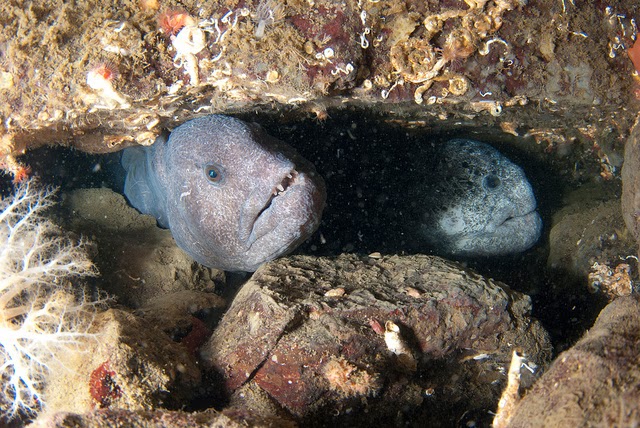

#Wolf eel eating full#
By raising the pimas I gave them a better chance then they would get in the wild.and now the researchers can study them w/o needing to get a full grown one from the wild.

I used to raise electric eels and arapimas to turn around and sell to zoos, and 'pimas require a CITES permit because they are endangered. Now captive rearing provides a sustainable population for hobbyists (something that took a long time to figure out), and has contributed to the restocking of wild populations (arrowannas are not easily domesticated and make good reintroductions). The extra attention to the species, and it's initial low population is what resuted in it's eventual comeback. Dragonfish of rare strains can be in the 5, sometimes 6 figures $US, and most are in the thousands. The cost of this fish can make it very expensive, and therefore keeps away the 'idiots'.
#Wolf eel eating how to#
Hobbyists became more involved and now have figured out how to breed their own in large ponds. A fish that was endangered (still requires a permit for import), yet highly prized for it's traditional 'good luck' value. I think the consumerism of the manta would be very similar to the asian arrowanna. Only those capable and knowing would try it. Can you imagine the cost of buying a manta? It would be in the thousands! That alone would keep the idiots who 'want it just to have it' away. But, the demand has to be there in the first place. Healthier stock for us, less impact on the wild.in fact.help (the initial demand for the species creates more attantion to preserving it). Clownfish, African Cichlids, Shrimp, etc.

#Wolf eel eating free#
In a free market society, commercial demand would say that if a species is in demand, and the wild does not have a sustainable supply of the demanded species, captive breeding becomes the goal, and often ends up producing the species with less cost than importing the wild specimens. Raising it.providing it with enough plankton to get it up to say.12".well, that would require some dedication.but far from impossible.Īll the money that people can pay for a wild specimen can really wake up a local government into saying "hey, we can make alot of money here, but we need to help out". Releasing one of these as a juvi into the wild would be easy. Mantas are plankton feeders with no known perdators beyond humans. The problems mentioned with regards to trout do not apply to mantas. As for acclimation, it would depend on the species. It would offer the chance to observe these awesome animals up close, to learn more about them, and then release it into the wild population at a size it might not even make it to if it were left in nature to fend for itself since day 1. Just imagine.those few who have 10,000gallon tanks in their homes.raising manta fry.sunfish a hobby.but knowing that eventually their pet would get released back into the wild. I wasnt saying it would be a good idea, nor probable, that people would want mantas as pets, but the standpoint that commercial demand can help certain species rather than harm. Well, Im sure many factors go into the captive rearing of each species.much of it depending on the species itself.


 0 kommentar(er)
0 kommentar(er)
